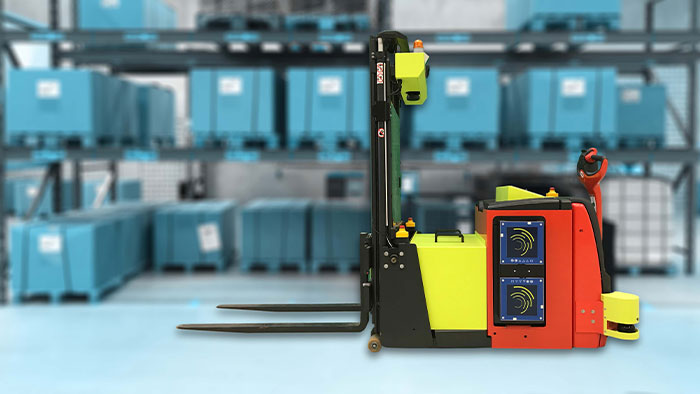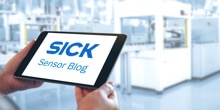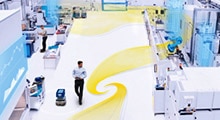Only if a machine bears the CE marking and a certificate of conformity has been obtained can the manufacturer place it on the market in the European Economic Area. The necessary CE certification is a complicated process that requires sound know-how. Large established machine building companies have in-house departments just for this. But how can junior OEMs and startups manage this mammoth task? The software company IdentPro called on the support of SICK.
Mammoth CE certification task successfully managed
“Everything helped. We had only a little in-depth knowledge in the area of CE and therefore needed someone to lend us their support. SICK acted as a kind of guide and navigator and showed us the path forward. We then jointly followed that path to a successful conclusion,” responded Michael Wack to the question on how his company had benefited most from the CE certification support from SICK. Wack is the founder and CEO of the software development house IdentPro, which seeks to advance the field of intralogistics with unmanned forklifts, i.e. autonomous vehicles. IdentPro uses digital twin technology to digitize warehouses and to significantly optimize the associated processes. Every physical item in the system is given a digital twin that is used to synchronize the real-world warehouse. The software also determines the new status and location of the goods in real time and sends this information to an optional ERP or WMS system, for example SAP WM/EWM. IdentPro thereby creates total inventory certainty through data consistency and also ensures an error-free and efficient automated operation. This also benefits the operational safety enormously.
More resources for core competencies
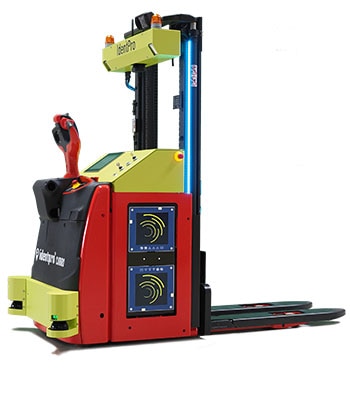
IdentPro developed its own autonomous forklifts that behave essentially like a regular forklift with driver by moving about freely in a non-line guided system (AMR). When transfer orders are issued, the vehicle finds a path from the current location to the desired destination – and generally transports large load carriers such as pallets, mesh boxes or the like. If the AMR detects an obstacle in its path, for example a stationary vehicle or pallet, it recognizes these and drives around them if possible. The vehicle therefore calculates the navigation path on a case-by-case basis and, if necessary, adapts it in real time.
Michael Wack characterizes this development as follows: “This is all still relatively new in intralogistics. It therefore raises the question: what safety technology does it require. and how do you obtain a credible CE marking for this kind of vehicle? Being a software company, this is not our area of focus of course and we can’t send our employees off to training for months or even years.” IdentPro decided to concentrate on its core competencies and therefore asked SICK to assist it with the planning, implementation and awarding of a CE mark.
At the start of the collaboration, IdentPro discussed with the certification and safety experts at SICK the basic tasks involved. Daniel Salas, Key Account Manager Mobile Platforms at SICK explains the initial situation: “IdentPro purchases the best basic device available on the market for the particular requirements and retrofits it with software and the necessary safety technology. The software package includes IdentPro’s own software functionalities: vehicle localization even in highly dynamic environments, and autonomous navigation including the detection and circumvention of obstacles. Further capabilities are then added including load detection and creation of the digital twin, plus sensors to detect the height of the load carrier. These are significant changes to the vehicle that invalidate the original CE marking and require a recertification.”
Obligatory first step – the risk assessment
The team of experts from IdentPro and SICK started with a risk assessment based on EN ISO 12100. The questions addressed by this analysis include: What potential hazards exist for the operator or the employee during operation? What things can go wrong? And how can you respond to these hazards? The risk analysis showed that the free navigation feature necessitates a special safety technology above and beyond the requirements for a typical AGV system. This includes, for example, not only a 360-degree protection for the vehicle but also load securing and load detection using sensors. Based on this comprehensive risk analysis, the experts then prepared a safety concept.
Certification assistance as an independent service
The next step was to create a verification and validation plan – what technology do we need, how do we employ it, and how do we verify it? This identified the need for a safe controller component, which was able to be implemented with the Flexi Soft safety controller from SICK. Daniel Salas makes it clear, however: “The assistance was not fundamentally tied to SICK’s products, but rather a service based on the currently applicable standards. We regard ourselves as a consulting partner who assists with certification regardless of the safety technology used.”
Safety experts are personally liable

The verification processes that followed were performed by safety experts from SICK who continuously keep themselves up-to-date with the latest standards and the requirements of the CE certification process by regularly undergoing the necessary training. Daniel Salas emphasizes: “By signing the test reports, these SICK employees, as TÜV-certified machine safety experts, assume personal liability. Customers can therefore place their full trust in the reliability and high level of validity of this assistance with the certification process.”

Based on this risk assessment and the safety concept, the safety-oriented design was undertaken which encompassed both the hardware and software. SICK also supported IdentPro with configuring and programming the safety-related sensors, and with the logic for the freely navigating autonomous vehicle. The correctness of the safety functions was then tested and confirmed by a final verification and validation. The last step in the certification process was a thorough check of the comprehensive documentation. When doing so, the safety experts always focus in particular on completeness and the mandatory consideration of the Machinery Directive.
The test of patience paid off
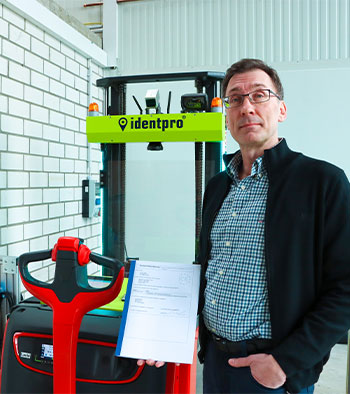
Read more
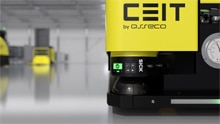
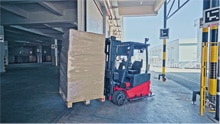

I would like to keep up-to-date and be informed of new articles on a regular basis!
